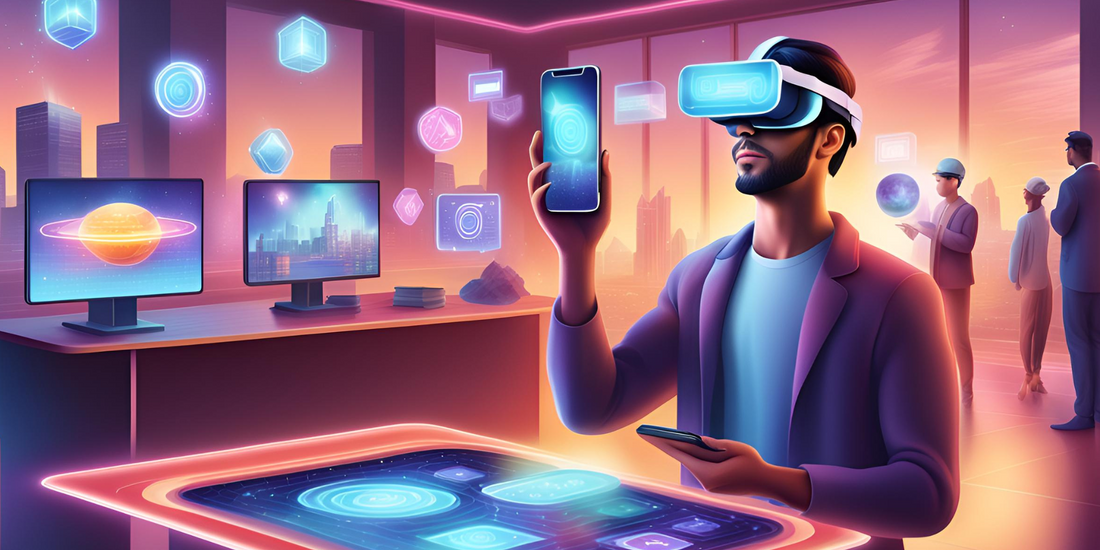
5 Industries That Will Benefit from Augmented Reality (AR)
Share
Augmented Reality (AR) is changing the way companies work, combining real and virtual experiences. As AR gets better, it's becoming clear that it can greatly impact various industries. In this article, we'll look at five areas that will greatly benefit from using AR. We'll explore how AR can increase efficiency, enhance customer experiences, and drive innovation. By understanding AR's potential, businesses can stay ahead of the curve and unlock new opportunities.
Industry 1: Healthcare
Augmented Reality (AR) is improving healthcare in three key ways. It helps patients understand their conditions and treatments using interactive 3D models. AR also allows surgeons to practice and refine their skills in realistic, risk-free simulations. Additionally, AR tools assist doctors in accurately interpreting medical images, leading to better diagnoses and care. This leads to faster recovery times and improved patient outcomes. Ultimately, AR is revolutionizing healthcare by making it more efficient, effective, and patient-centered.
Industry 2: Retail
Augmented Reality (AR) is changing the way we shop. It combines online and in-store experiences, making shopping easier and more fun. With AR, customers can try products virtually, seeing how they look without having to physically try them on. AR also helps shoppers find products in stores and gets them personalized deals. Additionally, interactive displays show product features in an engaging way. This makes shopping more convenient and enjoyable, increasing customer satisfaction. As a result, businesses can boost sales and build customer loyalty.
Industry 3: Education
Augmented Reality (AR) is making learning exciting and effective. It turns textbooks into interactive experiences, bringing complex ideas to life. Students can conduct experiments in virtual labs, safely exploring science and technology. AR also connects students and teachers remotely, creating immersive and collaborative learning environments. This helps students retain information better and develop valuable skills. As a result, AR is bridging educational gaps and opening up new possibilities for students worldwide.
Industry 4: Architecture, Engineering, and Construction (AEC)
Augmented Reality (AR) is revolutionizing Architecture, Engineering, and Construction (AEC). It helps architects create interactive 3D models, making design visualization easier. AR also optimizes construction planning by analyzing sites virtually, reducing project timelines. Additionally, clients can explore projects through interactive walkthroughs, ensuring clear understanding. This streamlines communication, reduces errors, and saves time. As a result, AR improves project efficiency, quality, and customer satisfaction, transforming the way buildings are designed and built.
Industry 5: Manufacturing
Augmented Reality (AR) improves manufacturing by making processes more efficient, productive, and accurate. AR guides workers through complex assembly tasks, step-by-step. It also lets experts provide real-time maintenance guidance remotely, reducing downtime. Additionally, AR-powered inspections detect defects and improve quality control. This results in fewer errors, lower costs, and faster production. By streamlining operations, AR helps manufacturers stay competitive and meet growing demand.
The Future of AR
Augmented Reality (AR) is getting better and better. In the future, we can expect even more exciting uses across various industries. New AR devices like smart glasses and headsets will improve. Cloud technology will make AR more accessible. Artificial Intelligence will make AR experiences more intelligent and personalized. As a result, AR will become an essential tool in our daily lives. We can look forward to AR transforming how we live, work, and interact with information, making our lives easier and more enjoyable
Implementing AR Solutions
To successfully use Augmented Reality (AR), businesses should identify areas where AR can make a big impact. They should partner with AR experts who have experience developing effective solutions. A clear strategy is also crucial, ensuring AR goals align with overall business objectives. By doing this, businesses can maximize AR's benefits and stay ahead of the competition. Additionally, regular evaluation and adaptation will ensure AR solutions remain effective and efficient. This thoughtful approach will help businesses harness the full potential of AR and drive long-term success.
Conclusion
Augmented Reality is ready to change many industries forever. It offers huge opportunities for growth, new ideas, and efficiency. By adopting AR now, businesses will be ahead of the game tomorrow. As technology advances, interacting with the physical and digital worlds will become effortless. This shift will open doors to new markets, customers, and revenue streams. Businesses that embrace AR today will lead the way into a future of limitless possibilities.